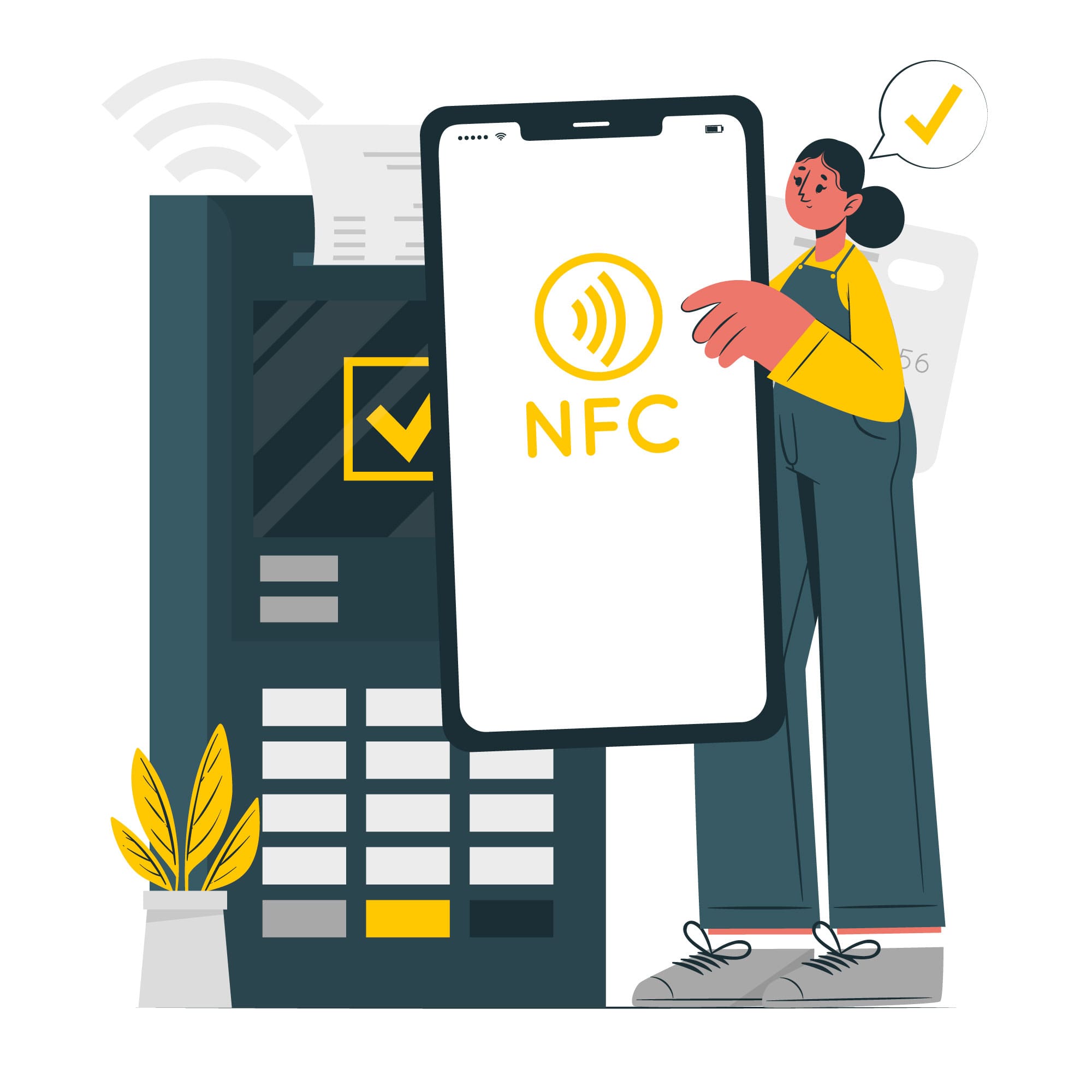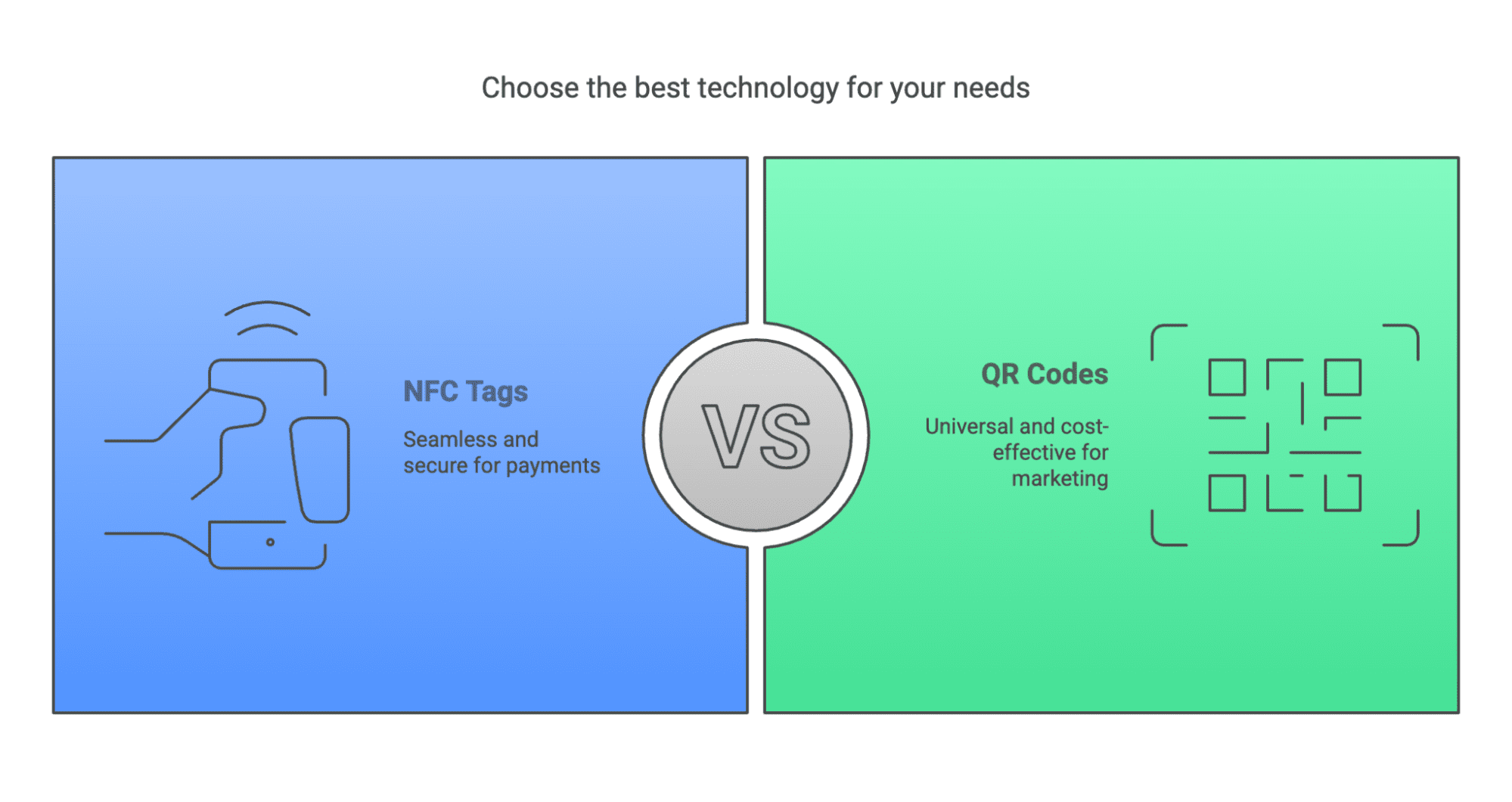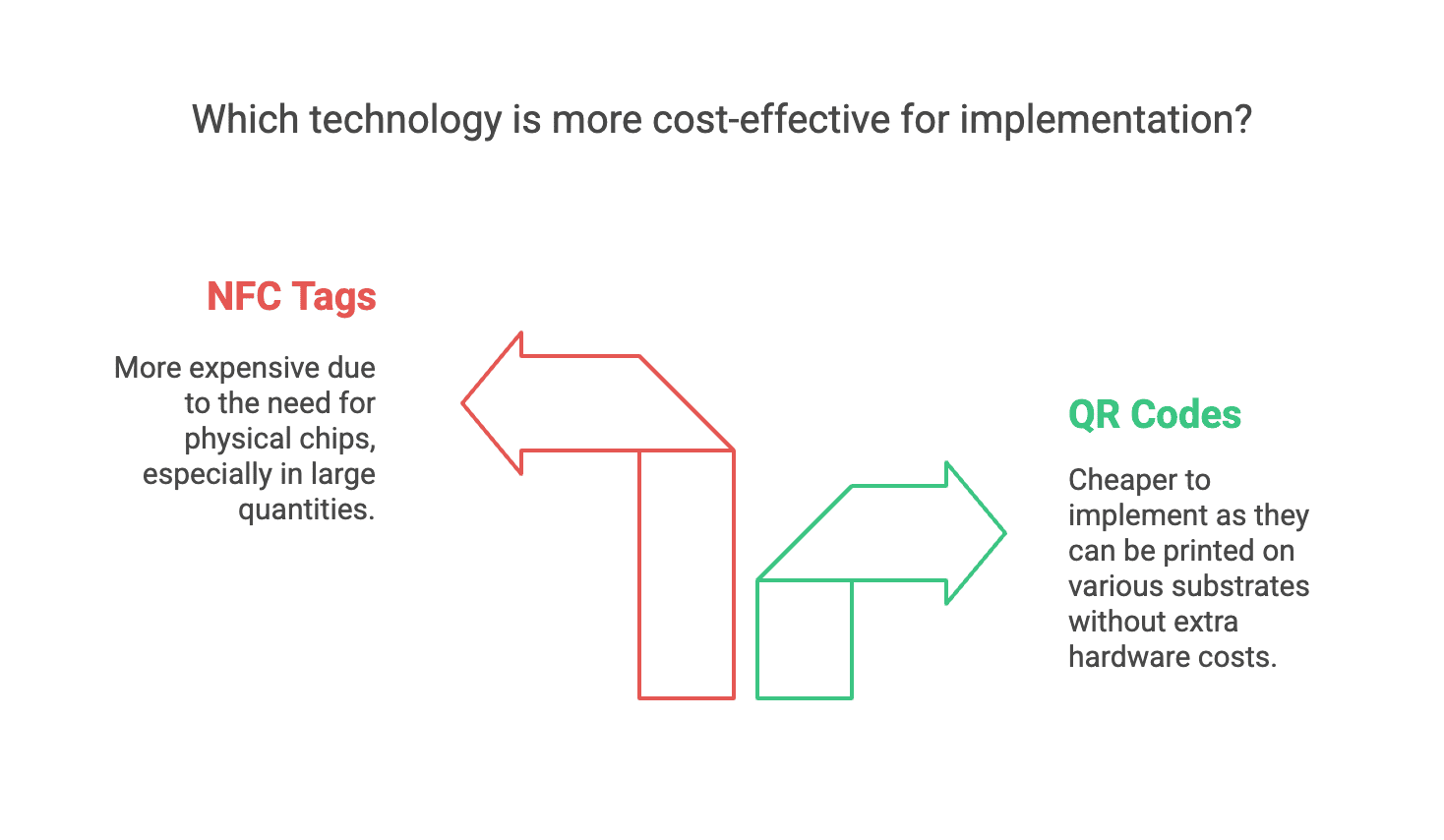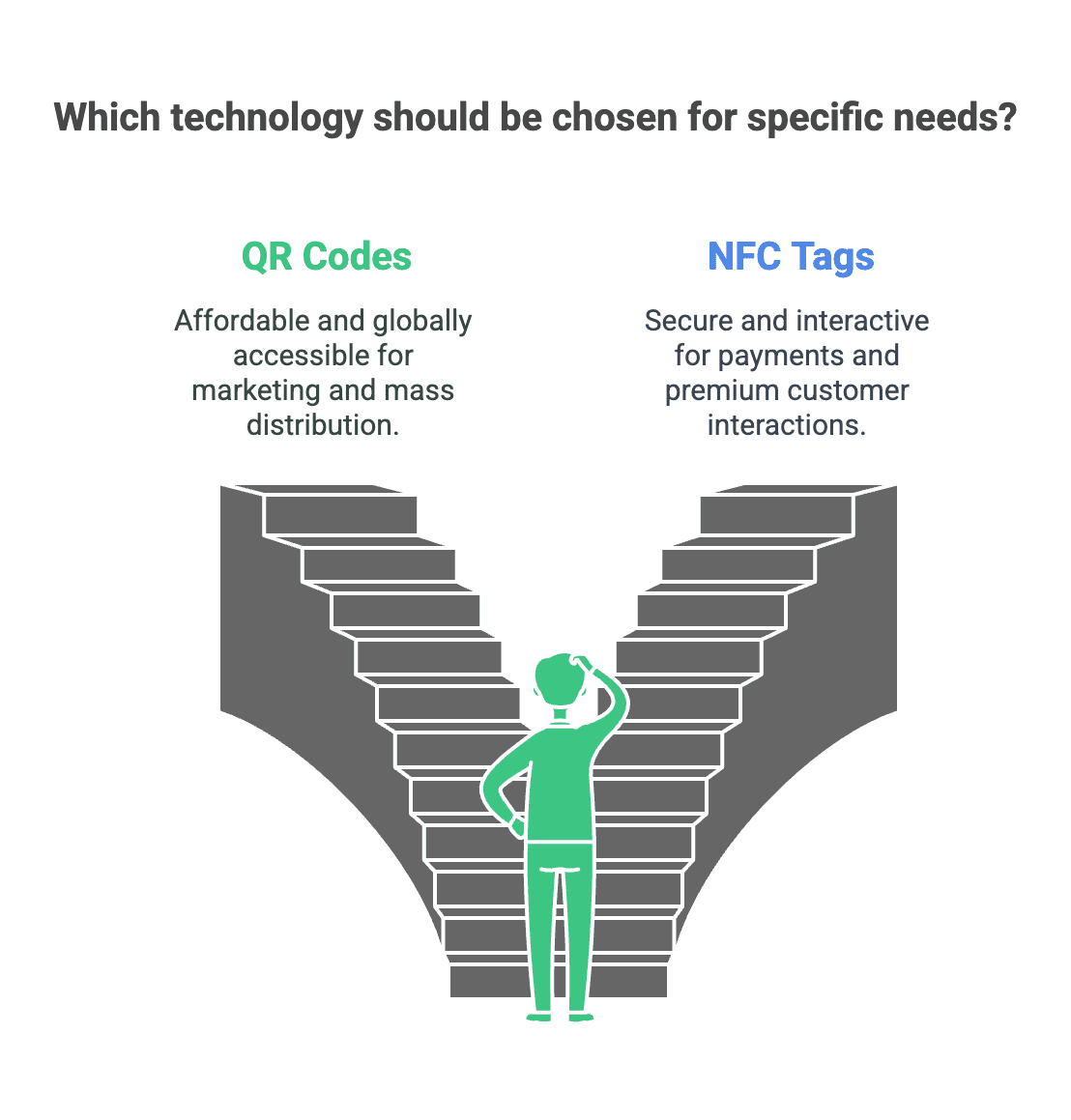In this era of electronic convenience, no consumers and companies have ever sought more convenient ways in which to exchange data, make payments, and rationalize customer contacts. Two such technologies at the cutting-edge fore have been QR codes and NFC tags.
They both get the job of information transfer done quite well, but they both do different things and operate differently. So, which one do you use? Let’s look at the advantages and disadvantages of both and when to use each.time
Understanding NFC tags and QR codes
What is NFC?
Near Field Communication (NFC) is device-to-device wireless communication between near devices (usually a few centimeters). NFC tags are small chips placed inside stickers, cards, or devices containing data that must be tapped to activate by an NFC device such as a smartphone.
What is a QR code?
QR code is data encoded in the form of a two-dimensional print. They can be easily scanned using a mobile phone camera. When scanned, the embedded information like web pages, media, or URLs can be accessed. QR codes are not based on utilizing an additional chip like the one needed for NFC but instead on a print or an electronic version of the code.

NFC vs QR Code: A detailed comparison

Ease of use and accessibility
In practice, the two technologies are easy to use but differ in implementation.
- QR Codes: The consumer needs to open the smartphone camera or a QR reader app to scan the code. Although newer smartphones have pre-installed QR readers, older ones might need an application.
- NFC Tags: Customers just need to tap their phone against the NFC tag for instant feedback—no app to launch or camera settings to tweak. However, not all smartphones (particularly budget ones) are NFC-enabled, so usage is restricted.

Verdict: NFC is more seamless, but QR codes are universally accessible since almost every smartphone has a camera.
Security and data protection
For businesses dealing with sensitive information, security is a key consideration.
- QR Codes: Since QR codes are static, they can be replaced. Cyber attackers can replace valid QR codes with their evil twin, redirecting users to phishing sites or malware downloads.
- NFC Tags: NFC itself is safer. NFC tags can be encrypted and authenticated, and access is limited to approved parties only. That's why they are a better option for secure payments and identity verification.
Verdict: NFC offers higher security. Hence, it is more appropriate for payments and exchange of confidential data.
Cost and implementation
For organizations looking for scalability, price is a significant issue.
- QR Codes: They are significantly cheaper to implement because they can be printed on any substrate—posters, packaging, business cards, or screens with no extra hardware cost.
- NFC Tags: They need physical chips, making them more expensive to manufacture and distribute. Even though one NFC sticker is not pricey, implementing them in large quantities (particularly in marketing or retail environments) is expensive.

Verdict: QR codes are the cheapest option, particularly for businesses that require mass distribution.
Versatility and use cases
Both technologies have excelled in other areas.
- QR Codes: Extremely well-suited for promotional discounts, digital menus, website addresses, product verification, and event registration. Organizations can embark on printing QR codes on paper items, item tags, and signs where users can quickly scan them.
- NFC Tags: Best suited for contactless payment, keyless entry, smart business cards, and interactive experiences (e.g., smart posters or museums). NFC tags are best in situations where users must have instant, seamless interactions without scanning a code.
Verdict: QR codes are more flexible when it comes to marketing and sharing information, but NFC is ideal for payments and authentication.
Maintenance and Longevity
In the case of long-term applications, durability matters most.
- QR Codes: Simple to print but are prone to getting damaged, faded, or obscured and are unscannable over time. But they can be easily reprinted at minimal cost.
- NFC Tags: More difficult to damage since they are embedded in physical objects and are less prone to wear and tear. However, NFC tags can be harmed by intense magnetic fields or physical shock.
Verdict: NFC tags are stronger, but QR codes are cheaper and easier to replace.
Which one should you choose?
The decision to use NFC tags versus QR codes depends on your particular use case:

- If you're looking for an affordable, globally accessible tool for marketing, customer interaction, and product packaging, then QR codes are the solution.
- If you require a smooth, secure, and interactive process for payments, verification, or premium customer interactions, then NFC tags are the more suitable choice.
- QR codes provide an efficient, scalable solution for companies with limited budgets or need for mass distribution.
- NFC is more suitable if security and high-end user experience are given more importance over cost issues.
Conclusion: The right tool for the right Job
Both QR codes and NFC tags have changed the way companies interact with consumers, but for distinct purposes. While NFC provides a safe, frictionless experience, QR codes offer an affordable, accessible, and simple platform for companies of any size.
Regardless of the technology you are utilizing, correct execution is the success factor. In case your organization requires QR codes, create them easily and fast with QR Code Developer— your trusted tool for secure, editable, high-quality QR codes.
